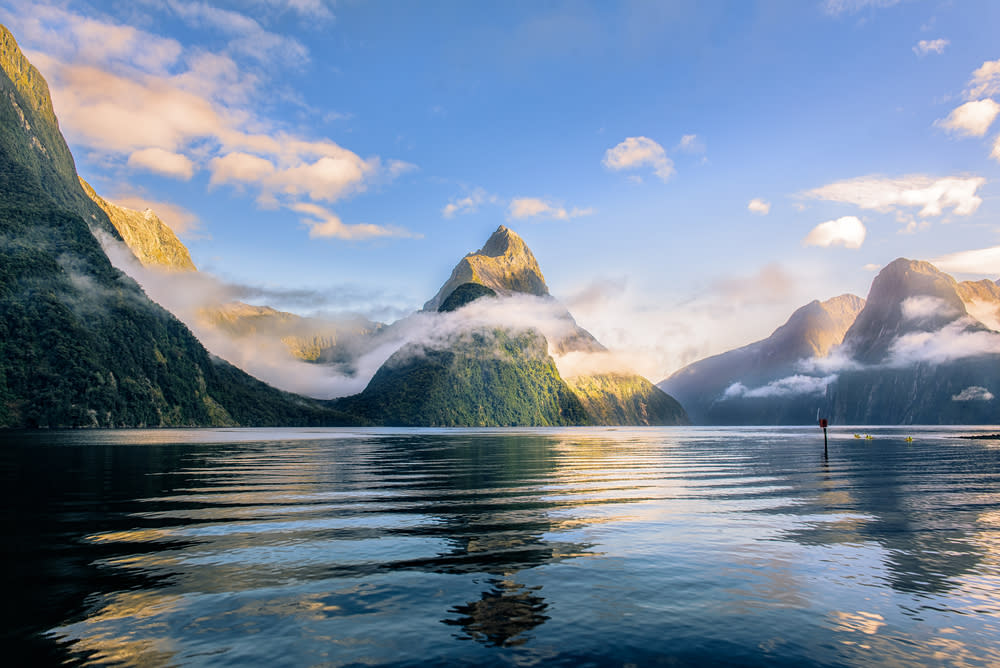More from Milford Sound
Main Menu
- 00:00
- 06:00
- 12:00
- 18:00
- 23:00
Milford Sound : Next 24-Hour Weather
Today - 14th April 2025
Sunrise 07:22
Sunset 18:15
Tomorrow - 15th April 2025
Sunrise 07:22
Sunset 18:15
Holiday Weather Now
Sorted by popularity:
Updated at 08:01 GMT
-
Temp feels like7°C45°F
-
Length of day10h 53m
-
Pressure30" (1023 hpa)
-
Visibility10 km (6miles)
-
Wind speed13 km/h
Sunrise 07:22
Sunset 18:15
-
Temp feels like:
7ºC (45 ºF)
-
Length of day:
10h 53m
-
Pressure:
30" (1023 hpa)
-
Visibility:
6 miles (10 km)
-
Wind speed:
13 km/h
One of the true natural wonders of the world, Milford Sound is a spectacular fjord located in the south west of New Zealandâs South Island. It experiences a mild, temperate climate with four distinct seasons. Officially the wettest place in New Zealand, and one of the wettest in the world, Milford Sound experiences high rainfall all year round. Rain falls on an average 186 days per year, with total average rainfall of 6813mm per year.
<?xml:namespace prefix = o ns = "urn:schemas-microsoft-com:office:office" />
Rainfall is highest during the summer, particularly in the warmest month of January; and lowest in the chillier winter months. In January, rainfall can be nearly twice as high as in June. However, the number of days in which rainfall is recorded is relatively uniform, at around 16 days per month, so pack a waterproof jacket at any time of year. Long sleeves and trousers are also advised due to the abundance of nasty, biting sandflies.
As long as you have dressed appropriately the wet climate is by no means a bad thing, as rains create a multitude of beautiful temporary waterfalls which cascade down the sheer rock faces, some from heights of nearly 1000m. In high winds the waterfalls can be particularly spectacular, with spray drifting far across the water and powerful updrafts occasionally forcing the waterfalls back up the cliffs.
As it is in the Southern Hemisphere, summer runs from December to March. Owing to its southerly latitude and coastal position, the weather is cool throughout the summer, reaching modest highs of around 19°C in January and February. Spray and ocean breezes can make this feel cooler, but the high humidity can have a warming effect. Rainfall remains high but is considerably lower in February than in December and January.
Despite the frequent rain, visitors are often treated to warm, sunny weather. The weather can change very quickly, sunshine often followed by lashings of rain, and this can dramatically alter the character of the landscape.
During autumn (early April - late May), temperatures drop from the average 19.5°C in February to 12.3°C in May. Rainfall levels are similarly high to those found in summer. Sunshine levels drop considerably in April as winter approaches, and snow occasionally falls in April and May.
Winter (late May - September) is fairly cold, with average temperatures of just 9.5°C in June and 9.1°C in July. Temperatures can drop to -5°C during the night, and frosts are common. Precipitation remains high, but is lower than any other time of year. Snow falls in June through to September, and if driving, it is essential to carry snow chains.
Despite the coastal position, Milford Sound is sheltered by the surrounding mountains and strong winds are rare. The sea is usually calm and flat all year round.
Spring (October - November), is milder and sees rising temperatures averaging 13.1°C in September and 16°C in November. Nights remain cold in September and October. The rise in temperature is accompanied by an increase in rainfall, especially in October which is particularly wet. November is dryer, before the heavy rain of summer resumes in December.

















